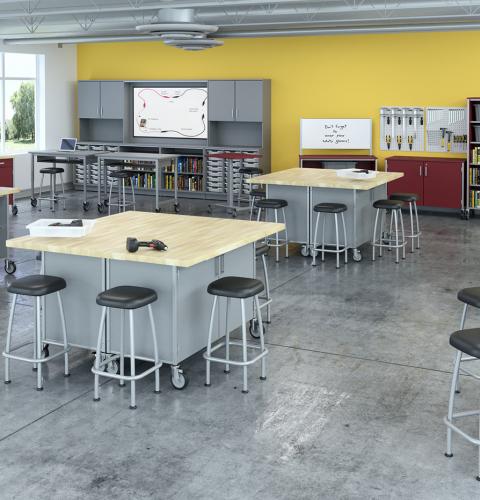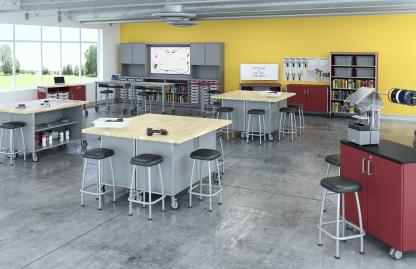
Teaching Method
Facilitate
Student Behavior
Group
Space
Clusters
Info-Medium
Low Technology
Insights for Makerspace Classrooms
While no two makerspaces are the same, they all need to encourage students to explore creativity and critical thinking skills in a collaborative workspace. Mobile furniture provides space for hands-on activities and brainstorming while providing easy access to tools and bulk storage. Stools elevate students to eye level, enhancing interaction as teachers circulate through the room.
